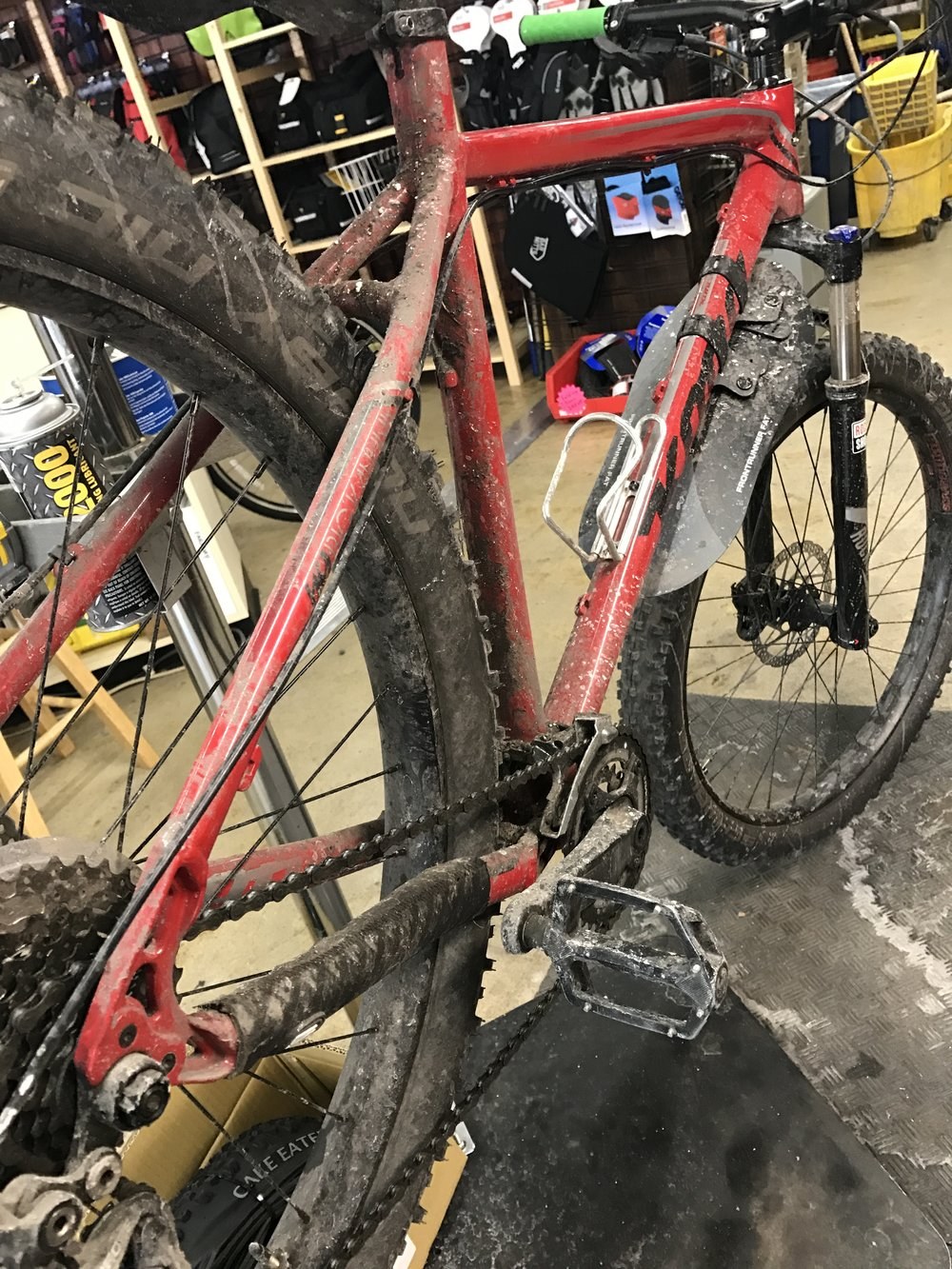As (most) of the country faces warm weather and hints of Spring, it’s that time again: Spring tune-up for your bicycle! Bicycles are generally durable machines that hold up well to use and wear, but prolonged storage can cause some issues. That’s why a spring tune-up for your bicycle is essential before you hit the roads.
When considering a tune-up, you have a couple of options. If you would like, you can take your bike in to your local shop. Depending upon their rates, a tune-up will cost around $35-$70. If you would like to save some money, or you just enjoy an excuse to spend more time with your bike, it’s fairly easy to perform a tune-up at home.
Spring Tune-Up for Your Bicycle
- Clean your bike thoroughly. Bikes take a lot of abuse- from road wear and tear to dirt, grime, and oils. If your bike has been in storage, it’s likely accumulated a layer of dust and may have even become the temporary home of small rodents (yes, I’ve seen this before)! Take the time to thoroughly clean your bike. You can get a cleaner specially made for bikes like Muc-Off, or use a general cleaner such as Simple Green. Try to limit your use of water while cleaning your bike and spray the cleanser on your rag before applying it to your bike to avoid drips. A toothbrush can get in the crevices of your bike.
- Check over your brakes. Your brakes are often the only thing between you and a bicycle crash, so look them over carefully. Examine the brake pads for uneven wear or ridges, and be sure that both pads hit the rims simultaneously. Make any necessary adjustments, as needed.
- Examine your wheels and tires. Check the wheels closely for scrapes, nicks, or damage. Be sure each wheel spins smoothly with no wobbling, and look over the rims for any damage. Check your tires carefully. Be sure they are inflated properly and examine them closely for any cracks, wear, or worn spots. Check the tread for wear throughout the entire tire, as tires can develop issues during long periods of time in storage. Never ride a bike with damaged tires.
- Inspect the drivetrain. Now it’s time to get into the meat of the matter: the drivetrain. Shift through each gear as you spin the wheels. Ensure that the transition from gear to gear is smooth and without catches. Examine the chain, derailleur, and cassette for any damage. There should be no missing teeth or excessive wear. Minor dents and scratches may be okay, but be sure they do not interfere with the function of the bike.
- Is it time to replace your cables? They should be replaced every few years, depending upon wear and use. Examine the cables closely for any crimping, cracking, damage, and rust. If you do need to replace them, you may want to defer to your local bike shop unless you are very handy.
- Add lubricant. It’s important to lubricate your bike regularly, especially after it has been in storage. This will help the chains and drivetrain work more effectively and hold up well. Apply lubricant to the chain while rotating the pedals. Don’t forget the moving areas on the derailleur and the brake levers. Use a dry rag to wipe off any extra oil.
- The loose ends. Finally, to finish the Spring tune-up for your bicycle, reapply any worn handlebar tape, and check over your gear. Before you take your bike out for an extended ride, take it out for a spin around the block. Listen closely for any unusual noises, and check the gears and steering to ensure smooth performance.
For a free legal consultation,
call 1-844-242-9253
Follow the seven steps listed above and you will be back on the road in no time at all. At Kass & Moses, our bicycle crash attorneys believe that a bicycle that is performing well should be your first defense when preventing an accident. Have you recently completed a Spring tune-up for your bicycle? Let us know how it went below!
Call or text 1-844-242-9253 or complete a Free Case Evaluation form


